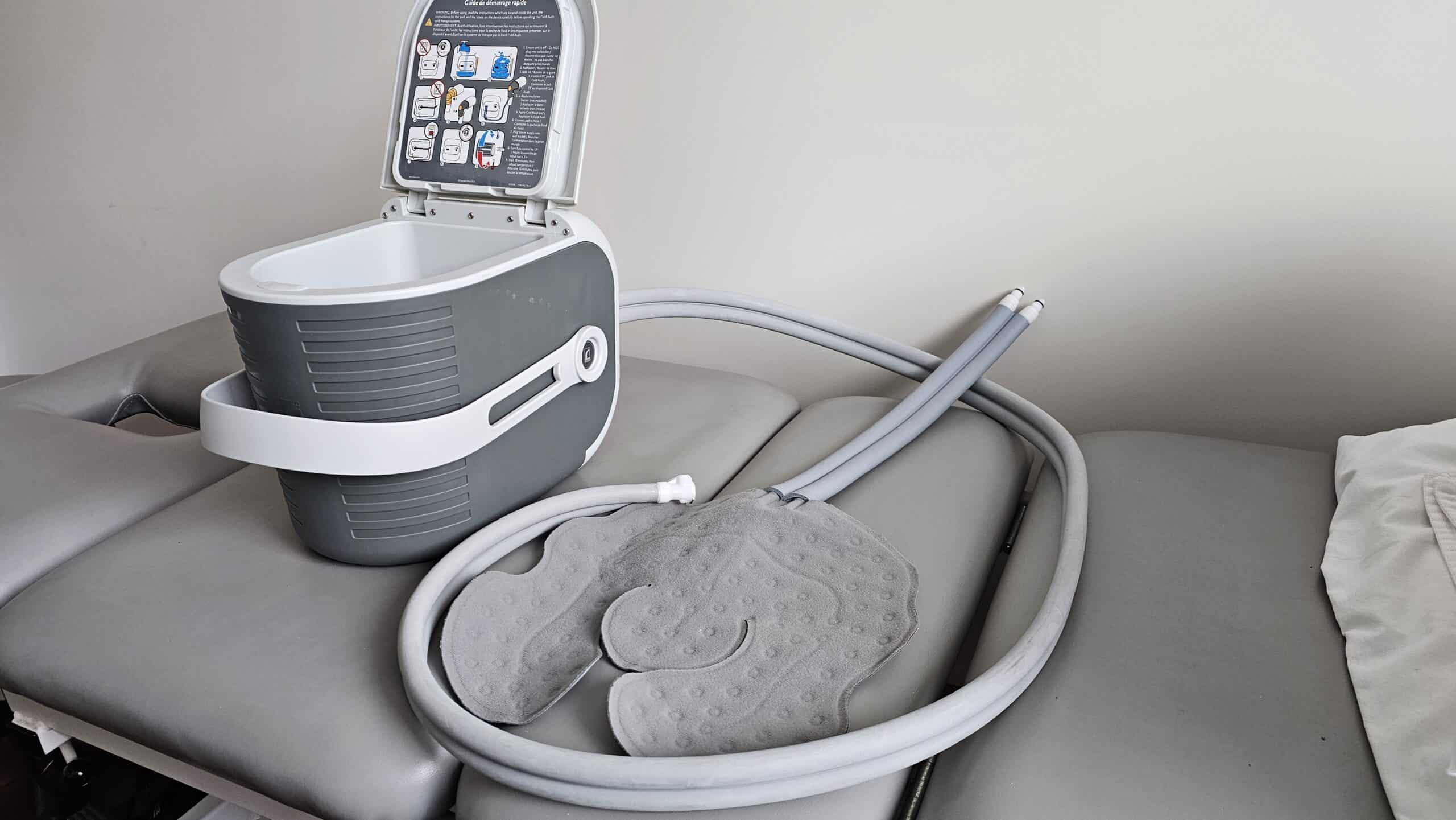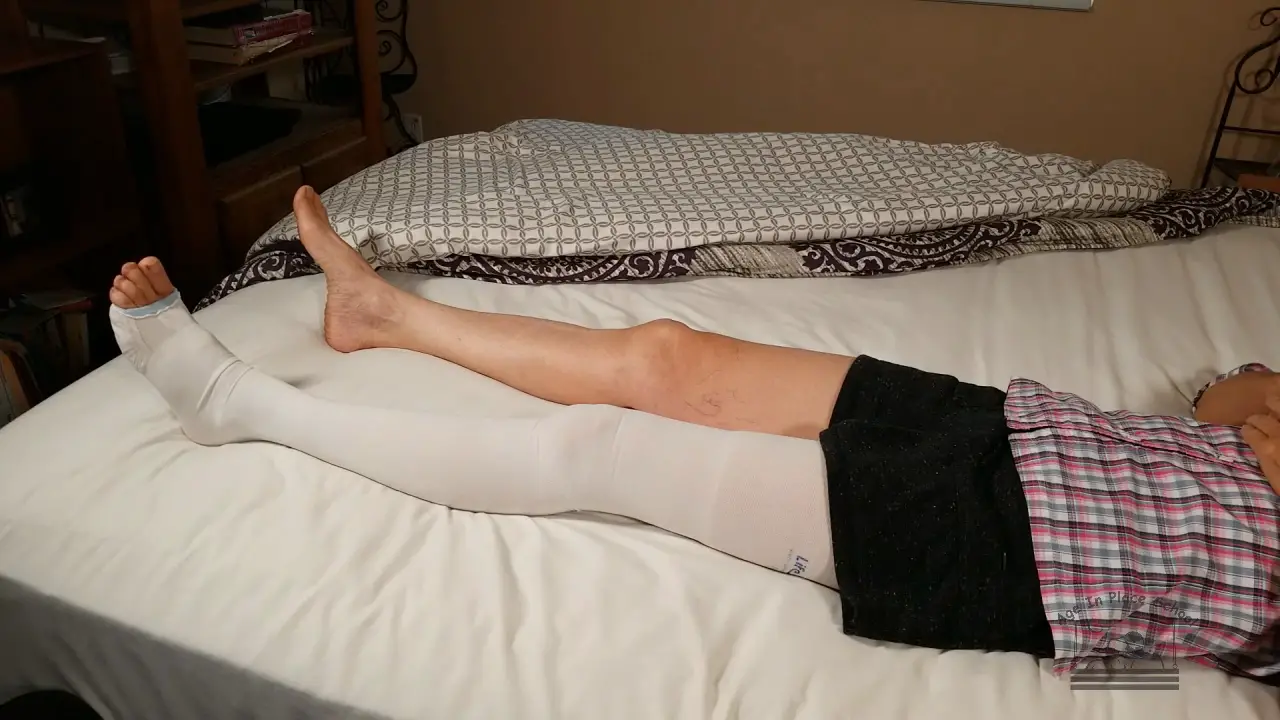This post contains affiliate links.
Welcome to your journey toward a pain-free, more mobile life post-total hip replacement. As an experienced orthopedic physical therapist with over four decades under my belt, I’m here to guide you away from frequent missteps that can hinder your recovery.
In this article, I will discuss the top five mistakes patients often make following hip replacement surgery, providing you with insights to avoid common pitfalls and foster a smoother, swifter rehabilitation process. Prepare to empower yourself with knowledge that ensures the best possible outcomes for your new hip.
Avoid the Top Five Common Mistakes After Hip Replacement Surgery
After total hip replacement surgery, the pathway to recovery can be straightforward, but it’s also fraught with potential missteps that you must conscientiously avoid to ensure a smooth and efficient healing process. As a seasoned orthopedic physical therapist, I’ve seen patients make critical errors that can hinder their outcome after surgery.
One of the top mistakes I see is neglecting recommended physical therapy sessions; these are designed to restore mobility and strengthen your new hip. It is common to experience discomfort, but adhering to your therapy schedule is crucial for optimal results after hip replacement.
Another common pitfall is over-exertion too soon after surgery. You might feel enthusiastic about your new joint, but remember that your body needs time to heal. Avoid strenuous activities that may compromise the integrity of your hip replacement.
Performing more activity, be it the recommended walking and exercise protocols recommended by the physical therapist, or Activity of Daily Living (ADLs), is by far and away the biggest mistake I see my Type A personality patients make.
Additionally, ignoring the prescribed weight-bearing restrictions can lead to undue stress on your healing hip.
Although a common practice early in my career, restricting weight bearing on the new hip prosthes is not common today in the patients I see, unless there is a complicating factor such as a hip infection.
Also common is the tendency of some patients to shun the use of assistive devices. Using a walker is not a sign of weakness, but a step towards properly navigating the recovery period after total hip replacement.
My patients are using a walker early in their rehabilitation, not because of weight-bearing restriction, but because of confidence and balance.
While using the walker, my concentration is on the correction of abnormal gait patterns, such as unequal step stride, and also on ambulation endurance.
I always keep my patients on the walker for a couple of days longer than they think necessary, but I never transition my patients to a cane.
A cane will reinforce the habit of limping that almost all my patients have developed from trying to decrease the weight-bearing pain before the hip replacement.
Read my article: How Long After Hip Replacement Can You Walk Without a Limp?
Lastly, skipping follow-up appointments with your surgeon is a mistake to avoid. These check-ups are essential to monitor the progress of your hip replacement surgery and to address any concerns promptly. Whether you’re top of mind about safety or keen on getting back to your regular activities swiftly, being mindful of and steering clear of these common mistakes will pave the way for a successful recovery avoiding mistakes after total hip replacement surgery. Remember, avoiding these pitfalls is pivotal to benefit fully from your hip replacement.
Following Post-Operative Restrictions: Key to Joint Replacement Recovery
As an experienced orthopedic physical therapist, I’ve seen firsthand the consequences of patients not adhering to the post-operative restrictions given after total hip replacement surgery. It’s vital for a successful recovery that you follow these guidelines meticulously.
During the recovery period, the hip joint is vulnerable, and disregarding these limitations can lead to complications or even a revision surgery. After surgery, patients may feel a temptation to rush their progress, but remember, healing takes time and patience.
Total hip replacements require you to avoid certain movements that can dislocate the new joint, but there is a big difference in restrictions when comparing surgical approaches, the anterior versus posterior surgical approach.
Read my article:
Anterior vs. Posterior Hip Replacement: Pain, Surgery & Approaches Compared
Many complications can be avoided by simply following the doctor’s prescribed precautions. Ensure you are clear on the specific precautions given for your situation, whether it’s a matter of permitted activities or avoiding certain positions when sitting or lying down. Always keep in mind that the process of healing and fully integrating your total hip into your body’s biomechanics is delicate.
Engage diligently in physical therapy sessions and don’t neglect exercises that have been recommended for home practice. By faithfully following these measures, you’re not only safeguarding your total hip’s longevity but also improving your overall chances for a full recovery.
Inadequate Pain Management: A Common Post-Surgery Mistake After Hip Surgery
After undergoing a total hip replacement, it’s essential to address post-operative pain with the utmost care. Nevertheless, inadequate pain management is a frequent oversight and may significantly impede your recovery journey.
It is not uncommon to experience pain after surgery, but how you manage it can make a world of difference. It’s vital to communicate openly with your healthcare team regarding your comfort levels and requirements, to ensure that pain does not persist untreated.
Once you’ve had hip replacement surgery, remember that your joint is healing, and adequate pain relief is necessary to participate in rehabilitation. Managing pain after surgery isn’t just about comfort; it directly affects your ability to perform necessary exercises and impacts your overall recovery. Those who do not adequately control pain may experience limited mobility in their hip and compromised joint function.
Many patients fear becoming reliant on medication; however, used judiciously under your doctor’s guidance, pain relief post-total hip replacement can lead to a smoother and quicker recovery. Inadequate pain management after hip surgery can result not only in discomfort but can also deter you from resuming normal activities, thus extending the rehabilitation process.
A key aspect of recovery after surgery involves balancing rest and movement. Managing your pain will allow you to adhere to post-operative restrictions correctly and engage in prescribed activities at the right pace. Whether it’s medication or other pain management techniques, they should always be administered as per your healthcare provider’s instructions.
One good non-medication pain control method is using cold therapy.
The best way to use cold therapy is to use a cold therapy machine or cold gel freezer packs (Amazon links).
My first choice is the Ossur Cold Rush Therapy Machine.
A less expensive option is the Core Gel Cold Packs.
Read my article: Ice After Total Hip Replacement: A PT’s Complete Guide


Taking this seriously is crucial for after surgery care. A joint that’s well taken care of after a hip replacement will have the best chance for a full return to function, enabling you to move past the pain and towards a more active lifestyle.
Swelling Control: Essential for Recovery After Joint Surgery
After hip replacement surgery, one of the most crucial factors for a successful recovery is effective swelling control. Swelling is a natural response after surgery, as the body initiates healing processes in the joint area. However, excessive swelling can lead to complications, impede mobility, and slow down the overall recovery process.
It’s important for patients recovering from total hip replacement to take active measures in reducing swelling to promote optimal healing. Keeping the affected hip elevated and applying ice can help manage the swelling in the initial days after the joint surgery.
My referring surgeons also instruct the patient to wear a full-length thigh-high TED hose to control swelling.
Read my article:
How Long to Wear Compression Socks After Surgery: Post-Surgery TED Hose Guide

Additionally, gentle and guided movements, as prescribed by your healthcare provider, encourage circulation and help disperse fluid buildup around the hip. Ignoring the significance of swelling control after hip replacement surgery is a common post-surgery error.
It’s not just about comfort, prolonged swelling can affect the new joint’s function and longevity.
Following the recommended exercises and wearing compression garments, if advised, are part of the recovery regimen that shouldn’t be overlooked.
Moreover, adherence to post-operative restrictions plays a pivotal role in swelling control and joint recovery. Overexerting or engaging in activities too soon can aggravate swelling and compromise the integrity of the hip. The goal is a balance of rest and activity to ensure the hip has time to heal without becoming stiff or weak.
Incorporating these measures into your recovery routine can significantly influence the outcome of your total hip replacement. Remember, recovery is not just a phase; it’s the foundation upon which your new joint’s health and functionality are built. Patience and diligence in managing swelling after surgery are essential steps on the path to regaining mobility and resuming the activities you enjoy.
Physical Therapy Consistency: Best Practice for Hip Replacement Success
After hip replacement surgery, embracing physical therapy consistency is among the top predictors of a successful recovery. As an orthopedic physical therapist with over forty years of experience, I’ve seen the profound impact that dedication to therapy can have on patients’ outcomes.
It’s crucial not to underestimate the role of consistent physical therapy in your journey after hip replacement surgery. Good physical therapy practices, when adhered to regularly, can significantly enhance the stabilization and strengthening of your new hip joint. This consistency in therapy post-surgery maximizes your functional gains, minimizes potential complications, and restores mobility more effectively.
Ignoring the prescribed physical therapy protocols after hip replacement surgery is a common mistake I’ve witnessed among patients. It’s paramount that you maintain the best level of engagement with your recuperative exercises, ensuring that each session of physical therapy becomes a cornerstone in your recovery after surgery.
Rigorous adherence to therapy schedules not only improves your hip’s range of motion but also aids in managing post-surgical pain and swelling, key aspects highlighted in prior sections, such as “Inadequate Pain Management: A Common Post-Surgery Mistake After Hip Surgery” and “Swelling Control: Essential for Recovery After Joint Surgery.”
Remember, the goal of therapy after a hip replacement is to return you to your best possible function. Embark on this journey with the understanding that your hip and overall health depend on the good execution of your therapy plan. The best outcomes are not merely linked to the surgical technique or the surgeon’s skill, but are equally tied to the patient’s commitment to their physical therapy regimen. Indeed, consistency is key in the narrative of your hip’s recovery journey.
Home Exercise Importance After Joint Institute Surgery Treatment
Understanding the home exercise importance cannot be overstated after hip replacement surgery. As a seasoned orthopedic physical therapist, I’ve observed countless patients navigate the post-surgery journey. Integrating exercises into your daily routine at home plays a pivotal role in your recovery after undergoing a total hip replacement at a joint institute. Through meticulously designed exercises, you’ll foster strength and flexibility in the hip.
Exercises, when done correctly and consistently, can significantly expedite your journey to reclaiming your mobility. Regrettably, a common mistake post-surgery is neglecting the home component of your rehab protocol. The total hip replacement procedure is merely the initial step towards your mobility restoration, and an institute specializing in joint surgery generally provides comprehensive guidance for the regimen you should follow at home. These exercises are tailored to maintain the integrity of your new hip, hence their importance is second to none.
Many might feel a sense of relief after hip replacement surgery, leading to complacency when at home. It’s crucial to integrate home exercises into your recovery plan provided by your joint institute. Consistent physical therapy at home, as well as in-clinic sessions, are best practices for hip replacement success.
It’s also important to control post-surgery swelling through recommended exercises. Moreover, inadequate pain management is a common mistake that can deter you from sticking to your exercises; however, adhering to your pain management plan allows you to engage more efficiently in your at-home regime.
As an orthopedic physical therapist, I guide my patients through exercises focused on the hip and joint recovery after surgery, stressing the importance of maintaining consistency.
The impact of home exercises on the long-term success of your total hip replacement cannot be understated, showcasing the critical nature of incorporating them into your daily life post-surgery. Remember, after hip replacement surgery, the journey to recovery is a marathon, not a sprint, and with the right exercises, you’ll reach your milestones confidently and safely.
Neglecting Overall Health: A Top Mistake After Surgery
As an orthopedic physical therapist with a history of rehabilitating hundreds, if not thousands of patients, I’ve witnessed many patients make the crucial mistake of neglecting overall health after hip replacement surgery.
Beyond the specific recovery from surgery, your entire well-being is pivotal for a successful healing process. In the United States, the number of joint surgeries has ascended, bringing forth an emphasis on comprehensive health management post-surgery. It’s not enough to focus narrowly on the operated bone; rather, a holistic approach is essential.
After surgery, patients sometimes underestimate the value of nutrition, hydration, and even mental health. It’s a misconception that once surgery is completed, the hardest part is over. However, surgery marks the beginning of a journey. Health related habits such as smoking, poor diet, and inactivity can hinder recovery, impacting not only the new joint but also the function of the entire body. Recall that the goal is to return to activities that were hampered by your hip condition prior to surgery; this requires the whole system’s cooperation.
Moreover, complications like infections can be a threat if overall health is not taken into account. It’s not uncommon to miss subtle signs of systemic issues when you’re solely focused on the surgical area.
Following post-surgery instructions from your joint institute or surgery treatment center is critical. This includes adhering to prescribed home exercises and recognizing that swelling control, pain management, and physical therapy consistency are part of a wider health strategy. To forego or de-prioritize these after-surgery practices would be a considerable error.
Don’t fall into the pitfall of neglecting overall health after hip replacement surgery. A comprehensive health focus will support bone integrity and facilitate a united effort towards recovery, a principle upheld in every successful recuperation narrative shared by thousands of patients across the United States.
Bonus Tips from Texas Joint Institute for Post-Hip Replacement Care
The Texas Joint Institute is renowned for pioneering comprehensive care practices across the United States, and their insights can immensely benefit patients after hip replacement surgery.
First and foremost, it’s vital to adhere to the post-operative restrictions provided by your surgeon.
These are designed to protect the integrity of the new hip joint and ensure proper healing.
Moreover, managing pain after surgery isn’t just about comfort; it’s crucial for enabling participation in physical therapy and daily activities, thus fostering a quicker recovery.
Swelling is a natural response after joint replacement, but it must be controlled to prevent complications. Techniques such as ice, compression, and elevation are simple yet remarkably effective. Speaking of physical therapy, maintaining consistency in your physical therapy sessions contributes to restoring strength and mobility to your hip joint.
This same principle applies to following through with your home exercise regimen to reinforce the progress made during therapy. It’s essential to not overlook the importance of overall health in the recovery phase.
Adequate nutrition, hydration, and rest play significant roles in healing after surgery.
The Texas Joint Institute’s bonus tips encapsulate their commitment to exceptional joint replacement care, offering guidance for patients to navigate the journey of recovery securely. By avoiding the top mistakes and embracing these bonus tips, you’re more likely to enjoy a successful return to your active lifestyle.
Read my other articles about Total Hip Replacement
Frequently Asked Questions
Q: What are some common mistakes after total hip replacement surgery?
A: After hip replacement surgery, patients often make mistakes like neglecting prescribed physical therapy sessions, overexerting themselves too soon, avoiding the use of assistive devices like walkers, and skipping follow-up appointments with their surgeon. All of these actions can hinder your recovery and negatively affect the outcome of your surgery.
Q: What are the consequences of not adhering to post-operative restrictions?
A: Ignoring post-operative restrictions can lead to complications or even the need for revision surgery. These limitations are in place to protect your new hip joint during the vulnerable phase of healing. Activities that could dislocate the new joint, such as deep bending or crossing your legs, should be avoided in the posterior approach to total hip replacement.
Q: Why is managing pain after hip surgery so important?
A: Adequate pain management is key to a successful recovery because it allows you to participate effectively in rehabilitation exercises, which are necessary for healing. Uncontrolled pain can lead to reduced mobility in the hip, prolonged recovery, and an increased risk of complications.
Q: How can I effectively control swelling after hip replacement surgery?
A: To manage swelling, keep the operated hip elevated when possible, apply ice, and engage in prescribed gentle movements to encourage circulation. Avoid overexertion and adhere to your surgeon’s guidelines regarding rest and activity balance.
Q: What role does physical therapy consistency play in recovery after hip replacement?
A: Consistent participation in physical therapy is crucial for stabilizing and strengthening your new hip joint. It’s important to attend all scheduled therapy sessions and perform recommended exercises at home, as this consistency maximizes functional gains and supports a smoother recovery.
Paying It Forward
Age In Place School is a participant in the Amazon Services LLC Associates Program, an affiliate advertising program designed to provide a means for sites to earn advertising fees by advertising and linking to Amazon.com. We also participate in other affiliate programs which compensate us for referring traffic.



